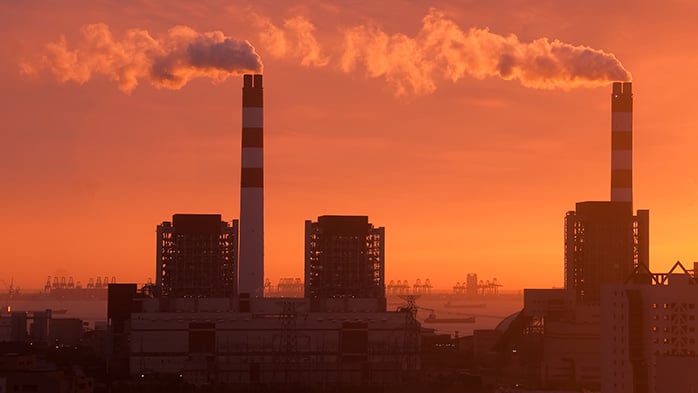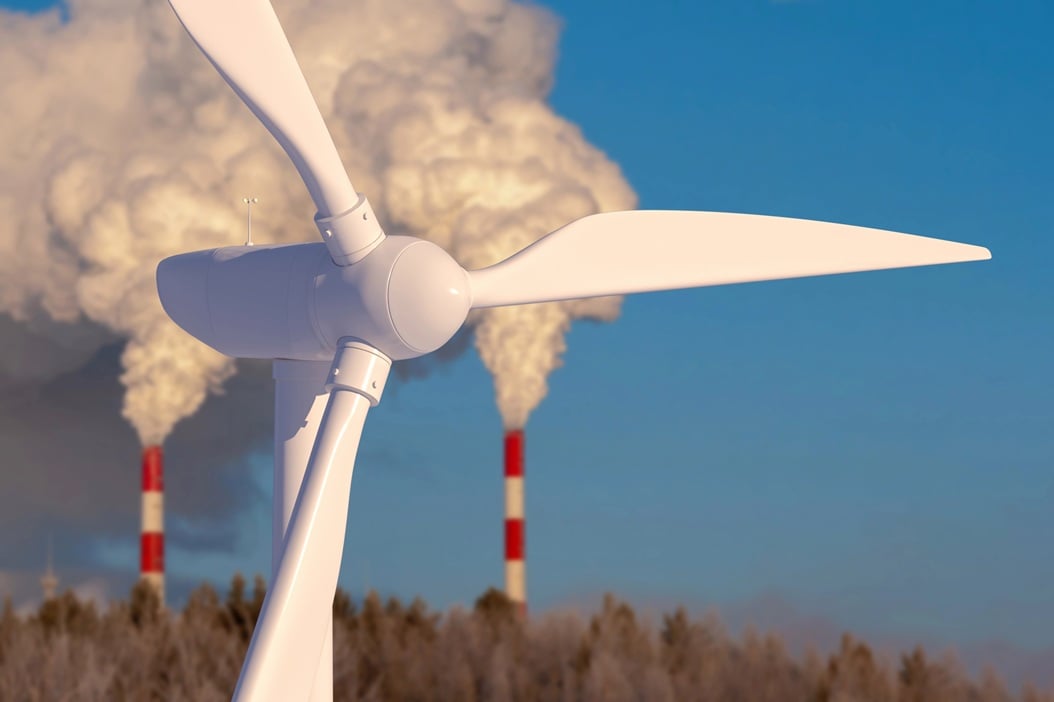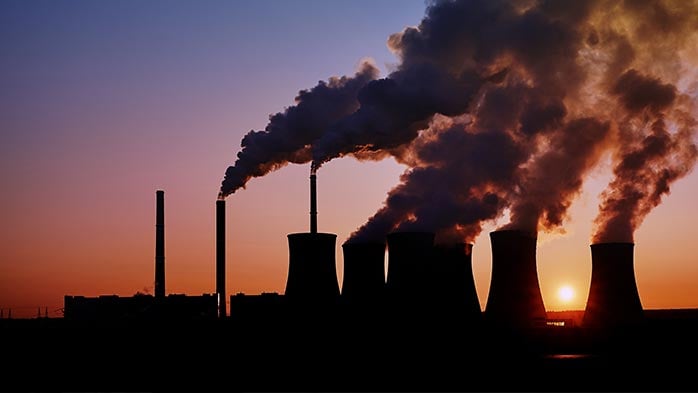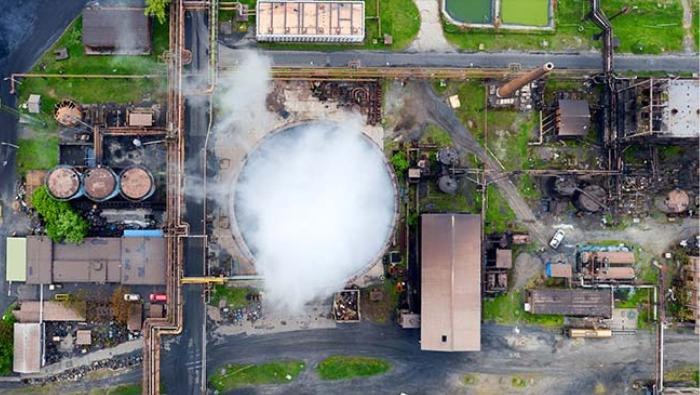This Insight is the second in a two-part series looking at decarbonisation trends and their impact on commodity markets. Here we detail the different approaches to carbon pricing, how CRU undertakes carbon price modelling and the ramifications of carbon pricing on commodity markets. The analysis here builds on part one which explained why decarbonising commodity value chains is challenging, and the implications of this for commodity markets.
Understanding carbon pricing is vital as its role in incentivising emission cuts will grow internationally. Pricing emissions is one of the most effective ways to reduce emissions and will be central to many governments’ responses in mitigating climate change. Without carbon prices, the case for investing in decarbonisation is far more challenging. Policymakers will need broader and higher carbon pricing schemes to close the cost gap between traditional and green technologies.
Governments have various policy options – explicit carbon pricing, subsidies and mandated change
There are three broad policy options for promoting decarbonisation being used by governments today, each having advantages and disadvantages.
Explicit carbon pricing, as implemented in the EU, aims to increase the cost of traditional, fossil-based technologies such that low-carbon alternatives become economically viable. Explicit prices refer to direct charges levied on emissions per tonne, either through an emissions trading scheme (ETS) or a carbon tax.
By putting a price on carbon, companies and individuals are incentivised to invest in clean energy alternatives, adopt more efficient processes and reduce their overall emissions. Additionally, the revenue generated from carbon pricing can be used to fund clean energy development, environmental protection and other sustainable initiatives.
In the long term, this approach is likely the most efficient means of encouraging change, as the costs of decarbonisation are externalised and transparent. However, the full cost is borne by society directly, which can result in slow progress and reduced political appetite given the high cost of some low carbon options. The high upfront costs of some low carbon technologies can impact consumers uptake and political support. Without adequate support measures, carbon pricing can also create distribution issues, whereby the least advantaged in a society are proportionally the most impacted, hitting their political acceptability.
The second approach is through subsidies, in the form of direct subsidy, tax breaks or feed-in-tariffs. This is a form of implicit carbon price that reduces the cost of green technologies to make them more cost competitive with fossil fuel-based processes.
Subsidies can encourage faster change but in the longer term they will hit viability issues and governments will be unable to subsidise entire markets indefinitely. However, subsidies are a good approach to kickstart markets and start building scale, which can bring about technology cost reduction prior to the market taking a leading role.
A good example of the subsidy approach is the recent US Inflation Reduction Act (IRA). The IRA will certainly support the rollout of low carbon energy, infrastructure and EVs, but it may struggle to incentivise widespread adoption of some emerging technologies, such as green hydrogen and CCS. For example, the tax credit available for captured CO2 is $85 /t, but CRU’s modelling suggests it would need to be at least $180 /t to encourage widespread use of CCS in power generation.
The third approach is mandated change, where governments simply require low-carbon approaches or technologies to be adopted regardless of cost. This approach can drive change very quickly but, in globalised markets, it could put companies at a cost disadvantage. This approach must be backed up by strong support to ensure transitioning companies do not go out of business.
China is currently at the early stage of adopting this approach in industrial and power sectors, focusing on incremental energy efficiency rather than wholesale change due to the huge shifts required and the market impacts it could cause. However, China has proven its ability to drive through mandated change in the past – for example, when it undertook structural reform of its coal sector from 2016.
We forecast that China’s carbon emissions will peak well before the official target date of 2030, even without sharp increases in domestic carbon prices. In that sense, the 2030 target looks modest and there is relatively little pressure for major change in the interim. Indeed, the Chinese government can achieve much of its near-term emission reductions through energy consumption targets and measures within its ‘dual control’ system. Overall, we believe the carbon emission reductions in the next decade will mainly be attributed to renewable power displacing coal, increased use of scrap in the steel sector, an increasing share of less carbon-intensive industries, as well as industrial emission reduction control.
Moreover, China often outperforms its policy targets and, given the 2030 target is not too onerous we expect that will be the case here. However, the greater challenge will be achieving net zero by 2060. For this, CRU believes that the Chinese government will have to rely increasingly on carbon pricing to achieve the emission cuts required.
Carbon price ambitions are increasing but variations remain
There are ~70 national and subnational compliance carbon price schemes today, either an ETS or tax, covering ~25% of anthropogenic GHG emissions; and countries such as India and Vietnam, which are currently not in this number, are showing policy moves in this area. In countries with carbon pricing schemes, we are seeing a gradual increase in ambition, for example by raising carbon prices, expanding coverage and reducing exemptions. We are also seeing more interest in carbon pricing schemes in countries that trade heavily with the EU, such as the Balkans, which will help to minimise the impacts of the impending carbon border tax.
While there is a gradual increase in ambition, it is unlikely that there will be a convergence of prices, coverage or exemptions across countries at different stages of economic development.
Where are carbon prices heading?
The best case study of how to view and model carbon pricing is the EU where carbon price developments can be examined in a policy context (e.g., near term), as well as in a market and technology context (i.e., medium and long term).
There are many complex rules that govern the functioning of the EU ETS but, at its heart, it is a marketplace that allows participants to buy and sell CO2 permits. Each permit – known as an allowance or EUA – allows the owner to emit one tonne of CO2e. In this way, the price is set by supply and demand for allowances. EU policy determines the amount of emissions that can be produced in a given year via the supply of allowances.
Demand for allowances is set by the production of emissions – currently this is based on the activity levels and emissions intensity of the power sector and heavy industry, including sectors such as steel, aluminium, fertilizers and cement.
EU carbon prices spent almost a decade below €10 /t but a series of policy reforms since 2018 have tightened supply and prices have been on an upward trend, hitting €80–100 /t in recent months. While prices remain volatile, the future direction of prices is clear. Structurally higher prices are here to stay and are being driven by the EU’s commitment to a 55% reduction in emissions by 2030 and net zero target by 2050.
Given this trajectory, CRU forecasts carbon prices will reach upwards of $150 /t by 2030 (real 2023) as demand for EUA outstrips supply. Out to 2050, analysis of the carbon abatement curve tells us that prices will need to lift above $200 /t to incentivise decarbonisation of hard-to-abate sectors.
Carbon prices are driven by policy and technology
When forecasting carbon prices, one needs to understand both policy (i.e., supply) and industry dynamics (i.e., demand). On top of this, it is important to examine the cost differences between traditional technologies and low emission alternatives – a difference that will change over time as low carbon technology costs improve. The manifestation of this difference is the carbon abatement curve that helps inform us of the carbon price that policymakers will need to target to achieve a specific emission reduction goal in a specific year.
The figure above shows our abatement curve modelling for the EU in 2030, looking at abatement options across the economy. Each of the coloured blocks represents a different method or technology for reducing emissions (e.g., solar replacing coal power, EVs, hydrogen in steel, green ammonia etc.).
On the x-axis, the width of each block represents the emission reduction that can be achieved by using a specific technology. The height of the block – the y-axis – tells us the carbon price needed to incentivise the use of this technology or, in other words, the carbon price level that equalises the cost of conventional fossil fuel technology and its green alternative.
There are three key messages from this curve:
- In the vast majority of cases, decarbonisation will be expensive. Most emission reduction technologies cost more than the fossil fuel equivalent we use today and that is why we need clear policy tools, such as carbon pricing, to incentivise businesses change.
- The abatement curve is steep, hence, the carbon price level is highly sensitive to the extent of emission reductions being sought. The higher the targeted reduction, the higher the price needed.
- Many emissions relevant to commodity markets sit at the far right of curve – steel, ocean freight, green ammonia. The reasons for this are detailed in part one of this Insight series. Sectors that rely on hydrogen for decarbonising will need carbon prices of ~$200 /tCO2 or more to put green technology on an equal cost footing to conventional technologies.
Carbon prices are a long way from this level now and that is why these technologies are not in use today. However, we can see that, where governments set out a clear policy pathway and provide support, this gives businesses confidence to start investing.
Decarbonisation and carbon pricing will drive global trade
Carbon pricing will have real world consequences for the global industry. The rise of both explicit and implicit carbon pricing will change international trade where energy-intensive commodities such as steel, aluminium and fertilizers account for a significant portion of embodied carbon emissions. As countries shift towards lower-carbon production methods and implement carbon pricing mechanisms, trade flows will change.
However, carbon price impacts must be considered within broader sustainability trends:
- Multispeed transition: with different countries pursuing decarbonisation at varying speeds, there is a risk of creating an uneven playing field that could lead to deindustrialisation or offshoring of emissions.
- Interaction of climate and trade policy: the implications for policy making are not just domestic. New initiatives such as the EU carbon border adjustment mechanism (CBAM) or the US sustainable steel trade agreement will mean climate policy effects are felt by anyone looking to sell into these markets. Countries with stricter climate policies may impose additional costs on imports of carbon-intensive goods, leading to a rerouting of traditional trade flows.
- Regionalisation: as supply chain sustainability and resilience come under greater scrutiny, there is likely to be a shift towards greater self-sufficiency, diversification and reshoring. This trend could create new opportunities for local suppliers and manufacturers but may also lead to higher costs and reduced efficiency.
- New cost paradigm: the shift towards low-emission production methods and the rise of renewables will fundamentally alter commodity cost curves, redefining cost competitiveness. Low-emission, highly electrified processes mean those with more competitive renewables will have an advantage, while those that historically relied on cheaper fossil fuels will lose out.
The implications of decarbonisation on trade are far-reaching and complex, encompassing multiple dimensions including supply chain resilience, cost competitiveness and policy coordination.
Higher carbon prices are incoming
Renewable energy, green hydrogen production, CCS and EVs could all be competitive with the emitting fossil fuel-powered alternative, but only if the appropriate carbon cost is applied. Ultimately, this is why more governments will need to turn to carbon pricing to drive decarbonisation. This will drive major changes through supply chains.
As the world moves towards a low-carbon future, businesses must adapt and evolve to remain competitive. Decarbonisation is vital and the costs of inaction will grow rapidly, but decarbonising whole economies and value chains is not going to be easy nor cheap. Carbon pricing will be needed to address this. However, by understanding the risks and opportunities associated with decarbonisation and carbon pricing, companies can better position themselves to thrive in the future. One thing here is certain, commodity markets will be transformed by the spread of higher carbon prices.

















